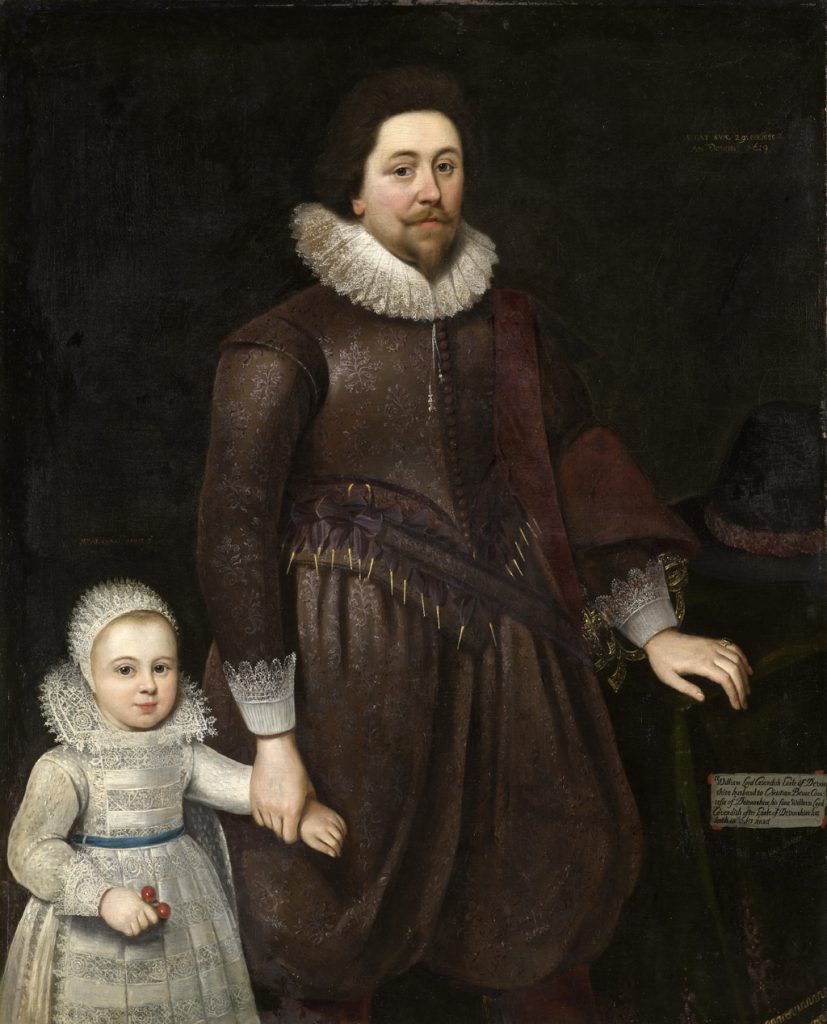William, Lord Cavendish, Later Second Earl of Devonshire (1591–1628), and His Son (work of art)
Información sobre la obra de arte
Acerca de
This painting of William Cavendish with his heir, William, is one of a pair of portraits. The other portrait represents William’s wife, Christian, and their daughter, Anne. Both portraits typify the rather sober and straightforward style that characterized British portraiture prior to the arrival of the celebrated Flemish painter Anthony van Dyck in 1632.
William and Christian married in 1608, when the bride was only twelve. She was the daughter of Lord Bruce of Kinloss, an ardent Scottish supporter of James I. The king arranged the marriage and contributed £10,000 toward the marriage settlement. William had a very lavish lifestyle, particularly after succeeding his father; according to one contemporary account, he “accumulated very great debt, entered into by an excess of gallantry, the vice of that age, which he too much indulged himself in.” Lady Cavendish skillfully managed the family’s financial affairs following William’s death in 1628 and was a person of considerable influence in both politics and literature.
Lord Cavendish wears a doublet and pants also cut from Italian brocade, and an elaborate white linen collar and cuffs, a brown belt, and a crimson cloak falling across his left arm. His young son, as was age appropriate, appears in a long dress under a linen “apron,” linen cuffs, and a snuggly fitted head covering. His blue belt and a rattle with two red balls attached complete his ensemble.
tags: fashion, family, identity, observation, power, change

